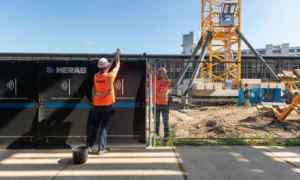In moments of cardiac emergencies, Automated External Defibrillators (AED devices) prove to be indispensable lifesavers. These portable gadgets are engineered to jump-start the heart through controlled electrical shocks, an often-critical intervention between life and death. Understanding the importance and functionality of AED devices empowers communities and fortifies societal readiness against cardiac arrests.
1. AED Devices: Guardians Against Sudden Cardiac Arrest:
Sudden Cardiac Arrest (SCA) doesn’t discriminate striking, irrespective of place or time. Herein lies the significance of AED devices, designed for immediacy and efficacy in response. They’re instrumental in reviving the heart’s rhythm, significantly escalating survival rates. These devices are intentionally placed in public spaces, ensuring accessibility and community safety.
2. User-Friendly Design for Quick Response:
One remarkable feature of AED devices is their user-friendly design. They’re built for swift action, even by untrained bystanders. With intuitive, step-by-step voice instructions, these devices guide users through the process, reducing panic and promoting efficient intervention. This ease of use is crucial, considering every second count during cardiac emergencies.
3. Integration with Emergency Services:
While AED devices are standalone emergency tools, they function within a broader framework of medical response. Immediately upon activation, these devices can notify local emergency services in specific models, ensuring that professional medical help is en route while bystanders administer the necessary initial support. This integration is vital, providing a seamless chain of survival assistance.
4. Continuous Advancements and Public Training:
The evolution of AED devices is continuous, with advancements focused on enhancing reliability, accuracy, and ease of use. Public access AED programs are accompanied by community training initiatives. These sessions educate individuals on using AED devices, performing CPR, and responding effectively to cardiac emergencies, fostering a community of ready responders.
5. Legal Protection for Good Samaritans:
Hesitation can occur when individuals fear legal repercussions from administering medical intervention. However, many regions have Good Samaritan Laws protecting individuals who assist others in emergencies. These laws cover using AED devices, encouraging public intervention by providing legal immunity for those attempting to save lives in good faith.
6. Data Collection for Improved Outcomes:
A post-event analysis is a lesser-known but critical function of AED devices. They record data during deployment, which medical professionals later analyze. This information helps in understanding the specifics of the emergency, refining treatment plans, and contributing to research that optimizes AED technology and emergency medical practices.
Final Thoughts:
AED devices are silent sentinels in our schools, malls, community centers, and workplaces. They embody our collective resolve to safeguard lives against the unpredictability of SCA. As technology progresses and societal awareness increases, the presence and importance of these devices will only become more pronounced.
AEDs are a powerful reminder of a fundamental truth: saving a life is a shared obligation. These devices are more than simply tools; they also serve as a representation of societal cohesion and a reminder of humanity’s unwavering dedication to life preservation. In addition to improving emergency preparedness, their wider adoption and ongoing public education about their use also promote empathy and connection!






























